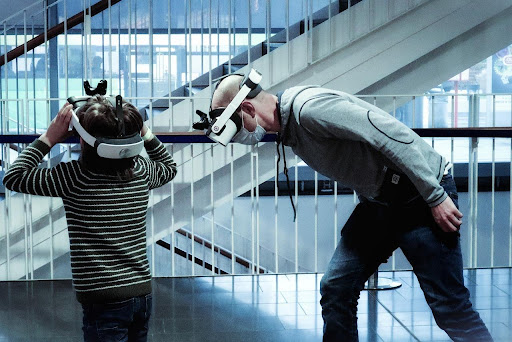Virtual reality (VR) is a technology that allows users to enter and interact with a digital environment, designed to simulate a real-world experience. And what is a virtual tour? It is a simulation of a building or space, created using
3D modeling, and viewed through a VR headset. This technology is becoming increasingly popular in the architecture industry, and for good reason.
Table of Contents
Benefits of Using Virtual Reality in the Architecture Industry
The use of virtual reality in architecture can provide many benefits to both architects and clients. One of the key advantages of VR is that it allows architects to create accurate and detailed models of buildings, which can be easily modified and adjusted as needed. This can save time and money during the design process, as changes can be made quickly and without the need for costly physical prototypes.
Another advantage of VR is that it allows architects to better communicate their designs to clients. With VR, clients can experience a building or space in a more immersive way than with traditional 2D renderings or physical models. This can help clients better understand the design and make more informed decisions about the project.
Finally, VR can be used to create more engaging and memorable presentations. With VR, architects can create interactive presentations that allow clients to explore a building or space in real-time. This can make presentations more engaging and can help clients better visualize the final product.
How Virtual Reality is Changing the Design Process
The use of VR is changing the design process in many ways. One of the most significant changes is that it is allowing architects to create more accurate and detailed models of buildings and spaces. With VR, architects can create models that are more true to life than traditional 2D renderings or physical models. This can help architects identify potential issues early on in the design process and make necessary changes before construction begins.
Another way that VR is changing the design process is by making it easier for architects to collaborate with other professionals on the project. With VR, architects can share their models with other professionals, such as engineers or contractors, who can then provide feedback and suggestions. This can help ensure that the final product is of the highest quality.
Virtual Reality and Client Presentations
One of the most exciting ways that VR is being used in the architecture industry is for client presentations. With VR, architects can create immersive and interactive presentations that allow clients to experience a building or space in a more engaging way. This can help clients better understand the design and make more informed decisions about the project.
VR can also be used to create virtual walkthroughs of a building or space. This can help clients visualize the final product and get a sense of what it will be like to be in the space. This can be particularly useful for clients who are unable to visit the site in person.
Virtual Reality for Architectural Education and Training
VR is also being used to train the next generation of architects. With VR, students can explore and interact with buildings and spaces in a more immersive way than with traditional 2D renderings or physical models. This can help students better understand the design process and prepare them for real-world projects.
VR can also be used to provide continuing education and training for architects. With VR, architects can learn about new design techniques and technologies in a more engaging and interactive way than with traditional training methods.
Virtual Apartment Tours in Real Estate
VR is also being used in the real estate industry to provide virtual apartment tours. With VR, potential renters or buyers can explore an apartment in a more immersive way than with traditional photos or videos. This can help them get a better sense of the space and make more informed decisions about whether to rent or buy.
Future of Virtual Reality in the Architecture Industry
The future of VR in the architecture industry is bright. As VR technology continues to improve, architects will be able to create even more detailed and accurate models of buildings and spaces. VR will also become more accessible to clients, allowing them to participate in the design process in a more meaningful way.
In addition, VR is likely to become an even more important tool for architectural education and training. As more universities and schools adopt VR technology, students will be better prepared for real-world projects.
Conclusion
In conclusion, virtual reality is revolutionizing the architecture industry. From creating more accurate models of buildings and spaces to providing engaging client presentations, VR is changing the way architects work. As VR technology continues to improve and become more accessible, it is likely that it will become an even more important tool for architects and their clients.





